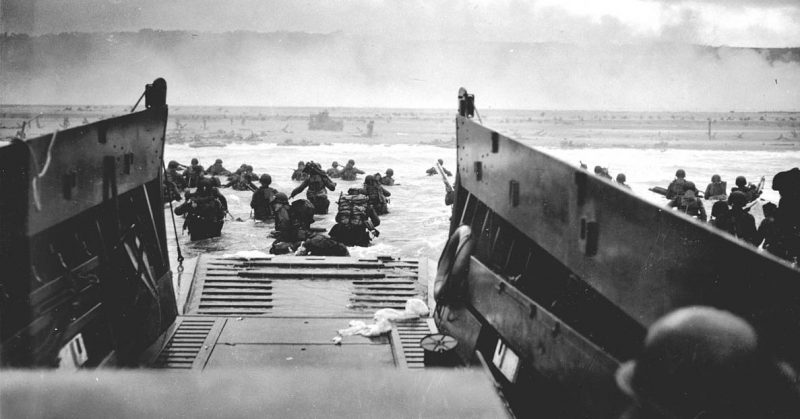War History Online presents the second part of this Guest Article from Joseph M. Durante
The Beaches
At Sword Beach, the easternmost landing site of the invasion, the objective of the British 3rd Infantry Division and Free French forces was to secure the city of Caen. Before the invasion of Sword Beach, British and Canadian paratroopers had captured and held two strategically placed bridges over the River Orne and the Caen Canal. They had also destroyed the German artillery battery at Merville in a fierce night-time battle. German resistance on the beach was intense, but the Allies slowly fought their way inland. However, in the afternoon the 21st Panzer Division, based in Caen launched the only counter attack of D-day.
On Juno Beach, the 3rd Canadian Infantry Division and the British 48th Royal Marine Commandos were to seize Carpiquet Airport, west of Caen. Juno Beach was being defended by the German 716th Infantry Division and the 21st Panzer Division at Caen. The 7th and 8th Brigades, accompanied by the 9th Brigade along with British Marines, supported the invasion of Juno Beach.
Due to rough seas, the infantry arrived ahead of their supporting armor. They encountered immediate tough resistance from the entrenched Germans as the Allied artillery bombardment had been ineffective in hitting their targets. The Germans had MG-42 machine gun points with anti-personnel artillery, anti-tank bunkers, and minefields located throughout the area. Despite their difficulties, the Allies secured the beach. They suffered 961 casualties.
At Gold Beach, naval bombardments had pounded the German defenders, the 352nd Infantry Division and the 716th Infantry Division but had failed to destroy their 75 mm gun. Allied infantry under 48th Commando, the 8th Armored Brigade, and the 50th Northumbrian Division landed under heavy gun fire. They endured fierce fighting until late in the afternoon when they made contact with the Canadian forces at Juno Beach on their eastern flank.
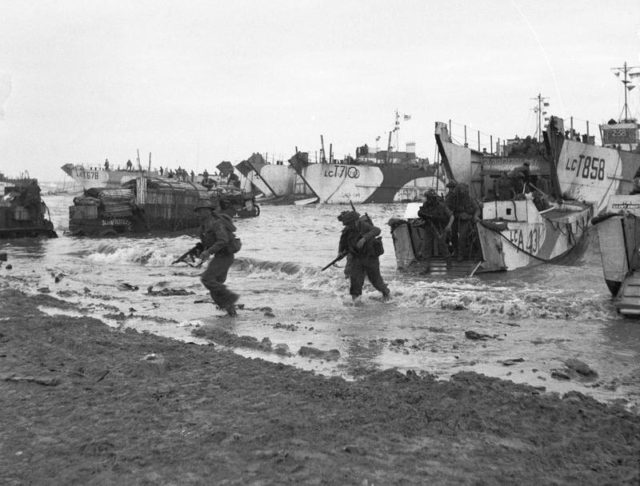
Next to Gold Beach was Omaha Beach which was assigned to the US 1st and 29th Infantry Divisions. The Allied presence at Omaha was over 42,000 infantrymen, two battleships, three cruisers, 12 destroyers, and multiple other support ships. The Germans had over 7,000 infantrymen, artillery pieces, mortar pits, anti-tank guns, machine gun locations, and rocket launchers on the cliffs above the beach.
The primary objective for the forces at Omaha Beach was to capture and secure a stronghold and then connect with troops on Gold Beach. Opposing the Allies were the 352nd Infantry Division, more than half of which were teenagers. The others were veterans who had fought on the Eastern Front against the Russians.
Omaha beach was perfect for defense. German troops had built into the cliffs tunnel systems for easy transportation of forces and supplies. If the Germans were going to stop the invasion anywhere, it would be at Omaha Beach. It was enclosed and narrow, and there was little chance to outflank the German defenders.
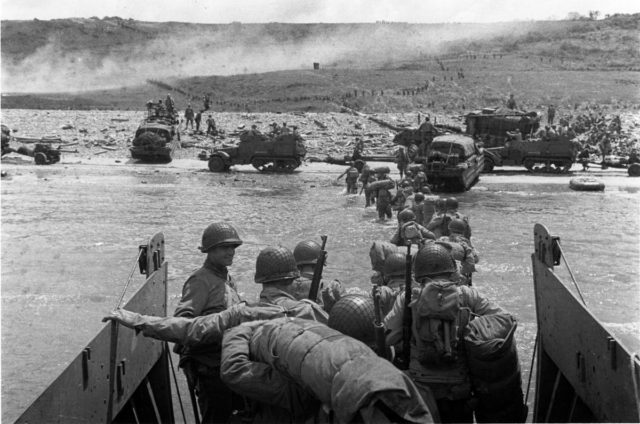
Omaha suffered a series of unfortunate circumstances. Navigation in rough seas was challenging in trying to land troops at the correct locations on the beach; most missed their target. Also, the German defenses were unexpectedly stronger than the Allies had expected. Casualties were heavier there than at all the other beaches combined. It was an open killing field for any infantry attempting to advance.
Weakened by casualties the surviving assault troops slowly, under the intense fire, created two small footholds. Eventually, the beach was secured.
The last of the five beaches was Utah on the Cotentin Peninsula which was the westernmost amphibious landing site. The objective at Utah Beach was to capture the port of Cherbourg to strengthen Allied naval capabilities and allow disembarkation of troops, supplies, and armor safely. In support of the amphibious landings, the 82nd Airborne Division and the 101st Airborne Division parachuted behind the German defenses with the purpose of cutting the peninsula off from the surrounding area. Unfortunately, many paratroopers landed far from their drop zones, and while many of their aims were fulfilled, it took longer than anticipated.
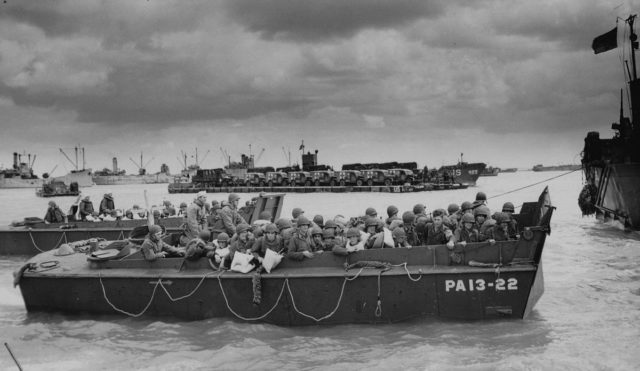
The 1st Battalion, 8th Infantry, with the addition of the 237th and 299th Engineering Combat Battalions, naval demolition teams, and Sherman tanks attacked Utah Beach in the landing craft with US naval artillery and the British Royal Navy in support.
Two German battalions, the 919th Grenadier Division, defended the beach although they were mostly made up of conscripts.
The beach landings there were reasonably successful as, by the end of the day, Allied forces had accomplished half their objectives and secured the beachhead with minimal casualties.
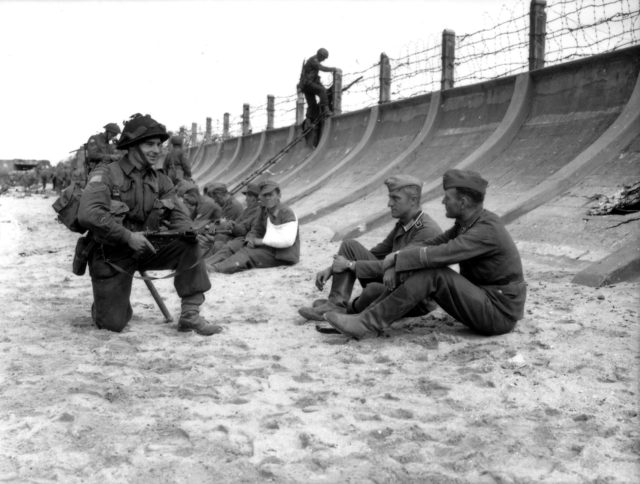
With all five beaches secured new artificial harbors were built, to supply and reinforce Allied forces in France.
The Normandy landings were the largest seaborne invasion in history, with nearly 5,000 landing and assault craft, 289 escort vessels, and 277 minesweepers. The Allies succeeded with their amphibious landings, gaining an important foothold in France due to the determination of their forces. Almost 160,000 Allied troops crossed the English Channel that day incurring at least 10,000 casualties with approx 4,500 killed. 1,000 Germans lost their lives.
Operation Overlord was considered the gateway to ending WWII both in Europe and then later in the Pacific.
Sources:
Stephan E. Ambrose: D-Day: June 6th, 1944: The Climactic Battle of World War II;
Frans Coetzee & Marilyn Shevin-Coetzee: The World In Flames: A World War II
Sourcebook;
Thomas W. Zeiler: Annihilation: A Global Military History of World War II;
